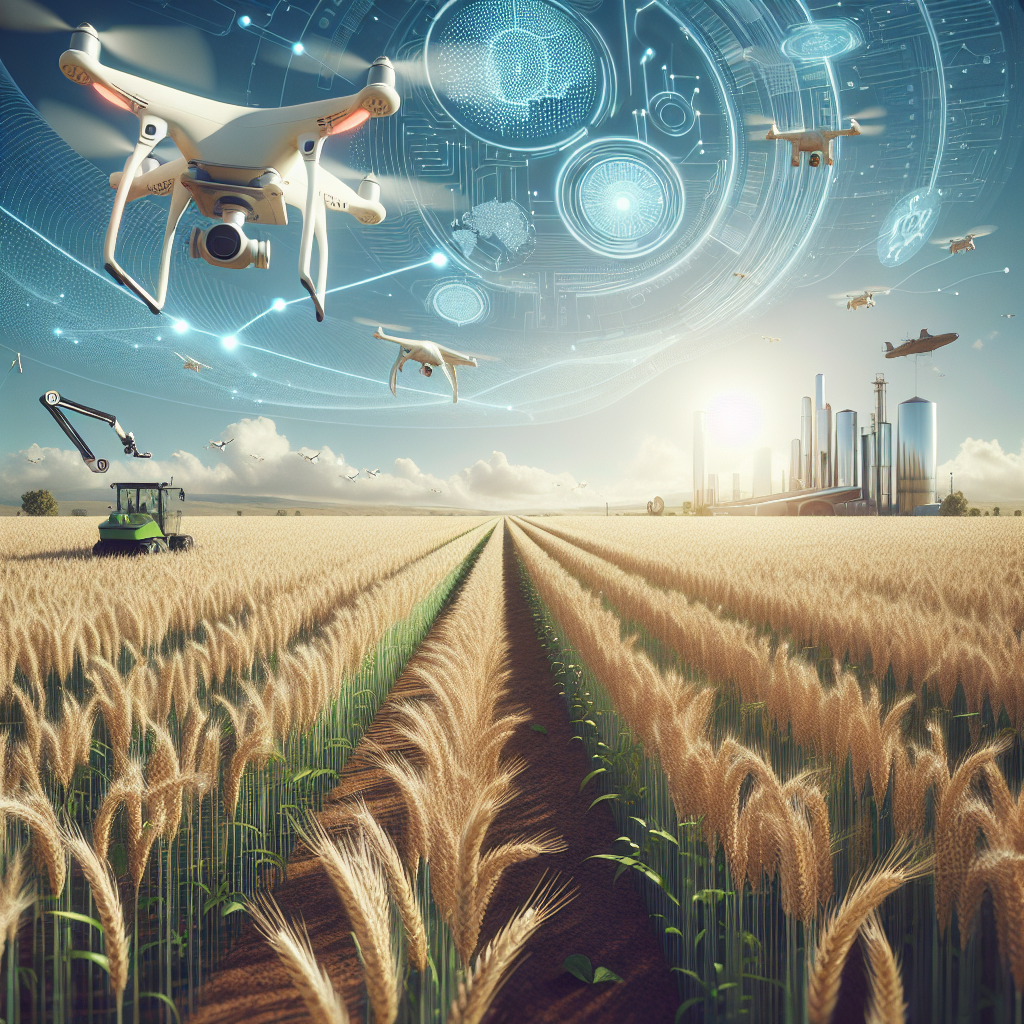Agriculture is a critical sector of any economy, providing food, employment, and economic stability to millions of people around the world. As technology continues to advance, the use of artificial intelligence (AI) in agriculture has become more prevalent, revolutionizing the way farmers grow crops and raise livestock. However, the adoption of AI in agriculture has also raised concerns about how it may impact agricultural policy and regulation development.
The Impact of AI on Agricultural Policy and Regulation Development
AI has the potential to significantly impact agricultural policy and regulation development in several ways:
1. Precision Agriculture: One of the key areas where AI is being used in agriculture is in precision agriculture. By utilizing AI technologies such as drones, sensors, and machine learning algorithms, farmers can collect real-time data on soil conditions, weather patterns, and crop health. This data allows farmers to make more informed decisions about planting, watering, and fertilizing their crops, leading to higher yields and reduced environmental impact.
From a policy perspective, the adoption of precision agriculture technologies raises questions about data ownership, privacy, and cybersecurity. As farmers collect more data about their operations, policymakers will need to establish guidelines for how this data can be used and shared to ensure that it is not misused or exploited.
2. Supply Chain Management: AI is also being used to improve supply chain management in agriculture. By using AI-powered algorithms to track and trace products from farm to table, companies can ensure food safety, reduce waste, and improve transparency in the supply chain. This can help policymakers better understand how food is produced, distributed, and consumed, leading to more effective regulations and policies to promote sustainable agriculture.
However, the use of AI in supply chain management also raises concerns about data security and transparency. As more companies rely on AI to manage their supply chains, policymakers will need to establish standards for data sharing and transparency to ensure that consumers can trust the food they are buying.
3. Labor and Employment: AI has the potential to automate many tasks in agriculture, from planting and harvesting to monitoring crop health and managing livestock. While this can lead to increased efficiency and productivity, it also raises concerns about the impact on labor and employment in the agricultural sector.
As more tasks are automated, policymakers will need to consider how to support workers who may be displaced by AI technologies. This may involve providing training and education programs to help workers transition to new roles or industries, as well as implementing regulations to ensure that AI technologies are used responsibly and ethically in the agricultural sector.
4. Environmental Impact: AI can also help farmers reduce their environmental impact by optimizing resource use, reducing waste, and minimizing the use of pesticides and fertilizers. By using AI-powered tools to analyze data on soil health, weather patterns, and crop growth, farmers can make more sustainable decisions about how to manage their land and resources.
From a policy perspective, the adoption of AI technologies in agriculture raises questions about how to incentivize sustainable practices and regulate the use of AI to protect the environment. Policymakers will need to work with stakeholders to develop regulations and policies that promote sustainable agriculture while also fostering innovation and growth in the sector.
Frequently Asked Questions about AI in Agriculture
1. What are some examples of AI technologies being used in agriculture?
Some examples of AI technologies being used in agriculture include drones for crop monitoring, sensors for soil and weather data collection, machine learning algorithms for predicting crop yields, and robotic systems for planting and harvesting crops.
2. How can AI help farmers improve their productivity and efficiency?
AI can help farmers improve their productivity and efficiency by providing real-time data on soil conditions, weather patterns, and crop health, allowing them to make more informed decisions about planting, watering, and fertilizing their crops. AI can also automate tasks such as planting and harvesting, reducing the need for manual labor and increasing efficiency.
3. What are some of the challenges and concerns associated with the use of AI in agriculture?
Some of the challenges and concerns associated with the use of AI in agriculture include data privacy and security, labor displacement, environmental impact, and ethical considerations. Policymakers will need to address these issues to ensure that AI technologies are used responsibly and ethically in the agricultural sector.
4. How can policymakers support the adoption of AI in agriculture while also protecting farmers and consumers?
Policymakers can support the adoption of AI in agriculture by providing incentives for innovation, investing in research and development, and creating regulations that promote sustainable practices and protect data privacy. By working with stakeholders to develop policies that balance innovation and regulation, policymakers can ensure that AI technologies benefit farmers and consumers while also addressing social, economic, and environmental concerns.
In conclusion, the adoption of AI in agriculture has the potential to revolutionize the way food is grown, distributed, and consumed. However, the impact of AI on agricultural policy and regulation development must be carefully considered to ensure that it promotes sustainable practices, protects data privacy, and supports workers in the sector. By working with stakeholders to address these challenges and concerns, policymakers can help ensure that AI technologies benefit farmers, consumers, and the environment for years to come.

